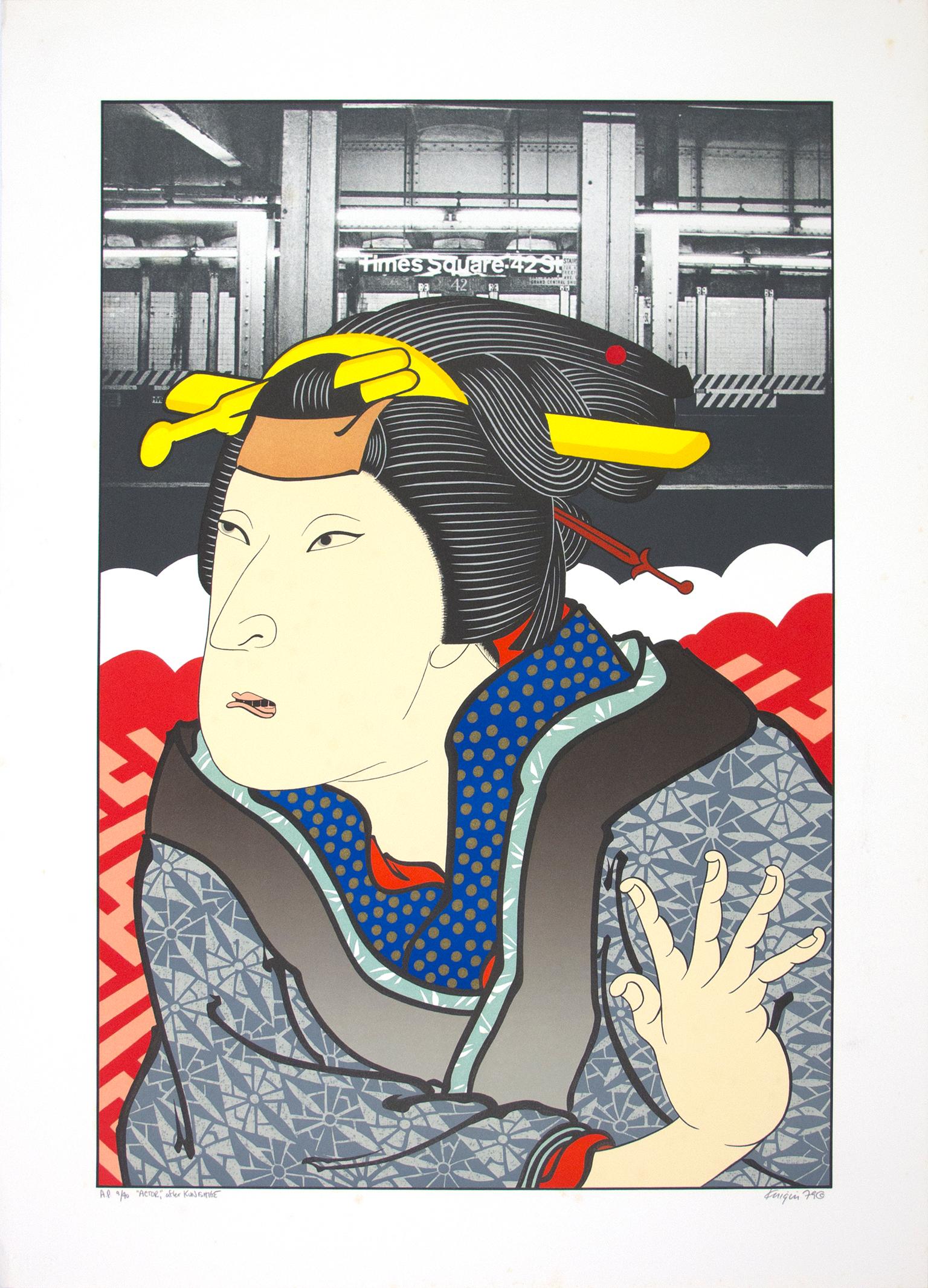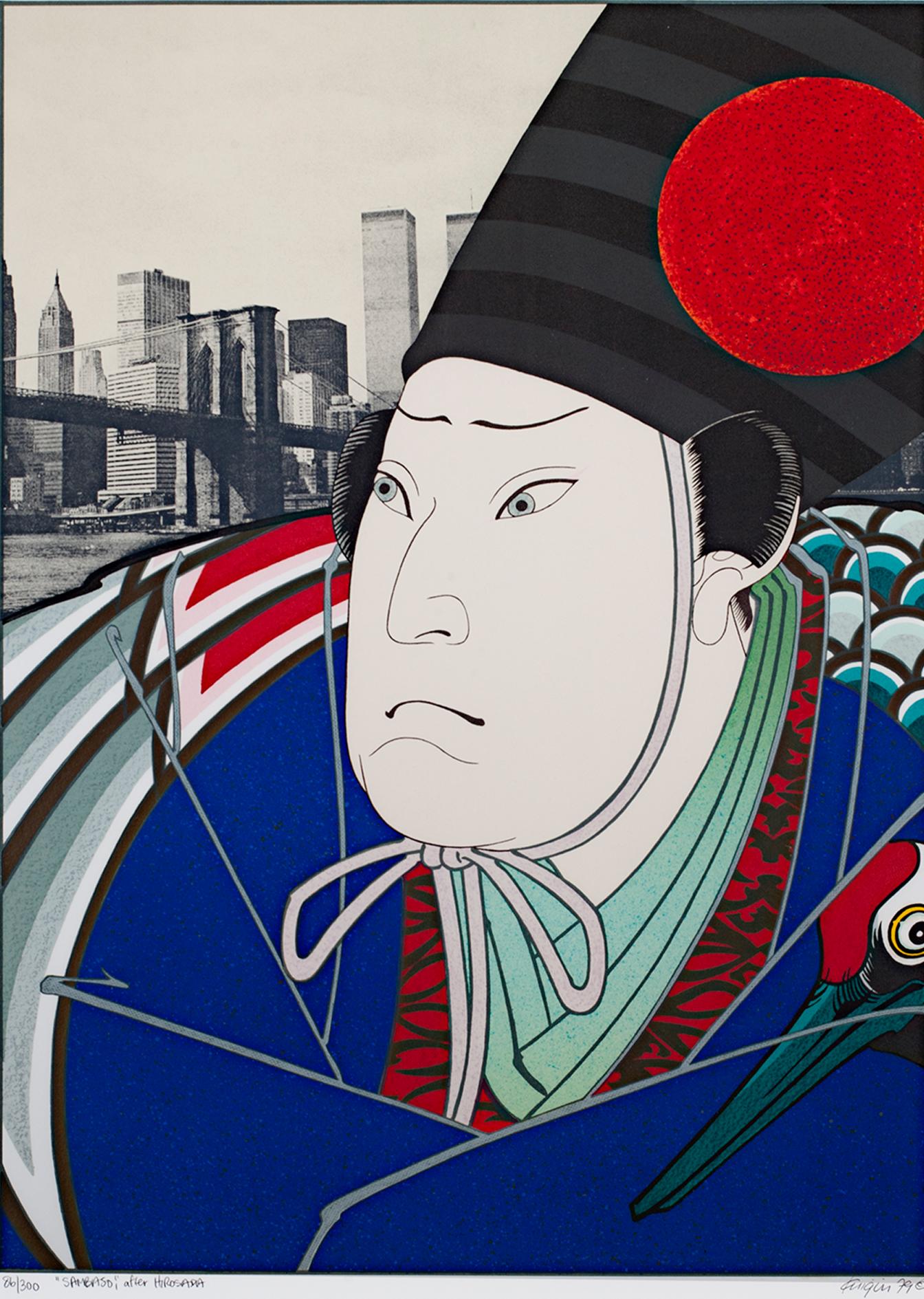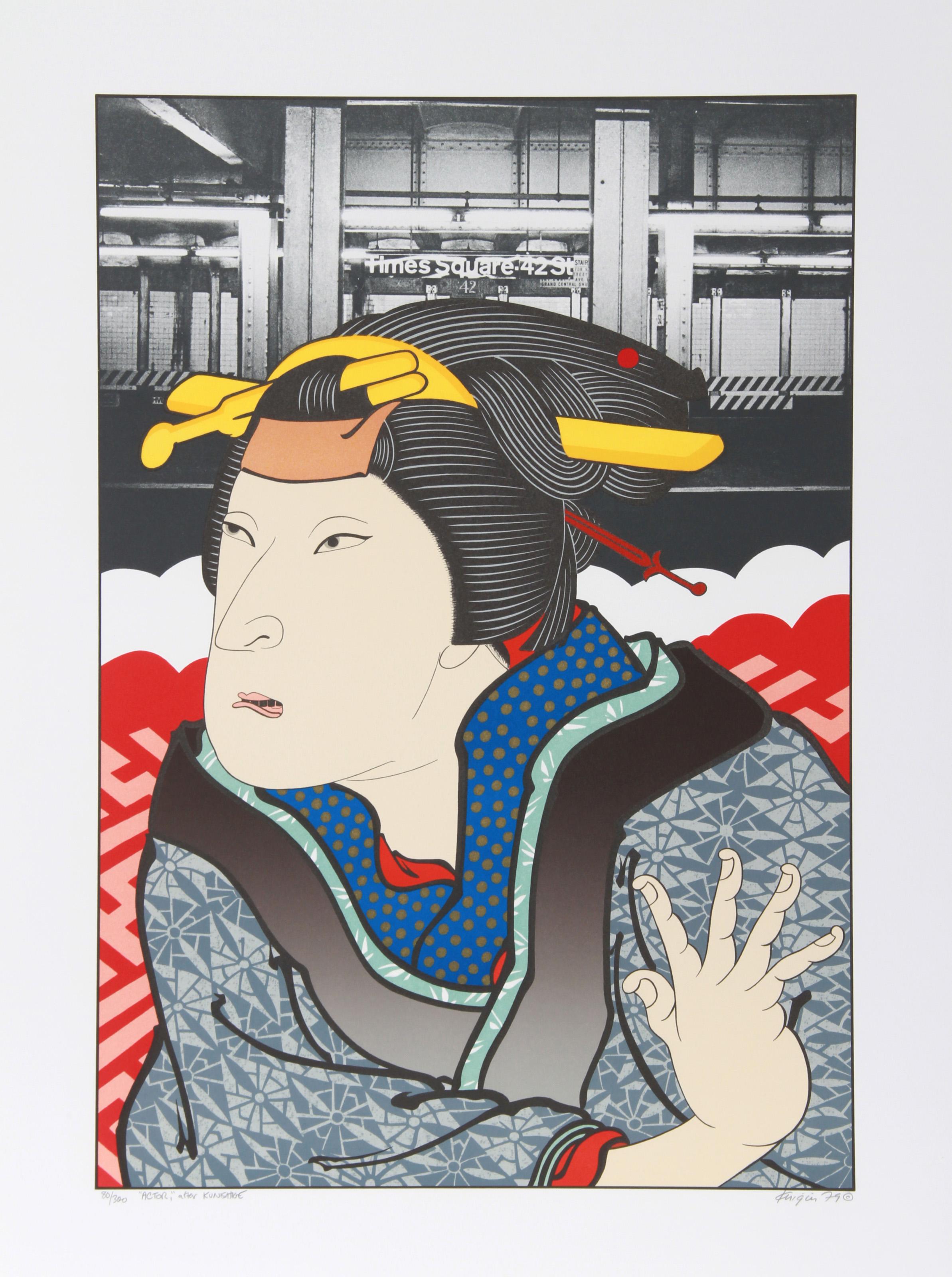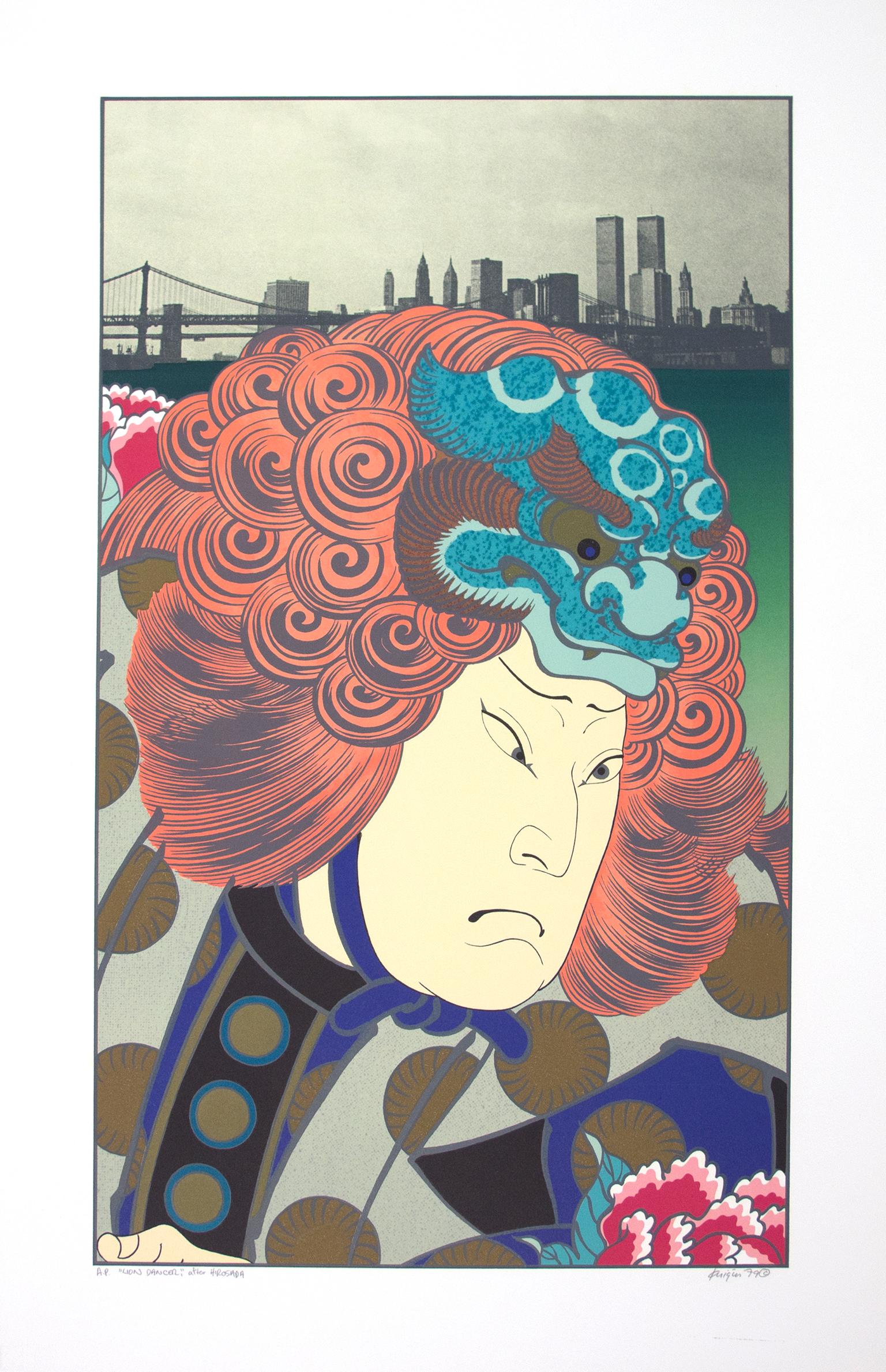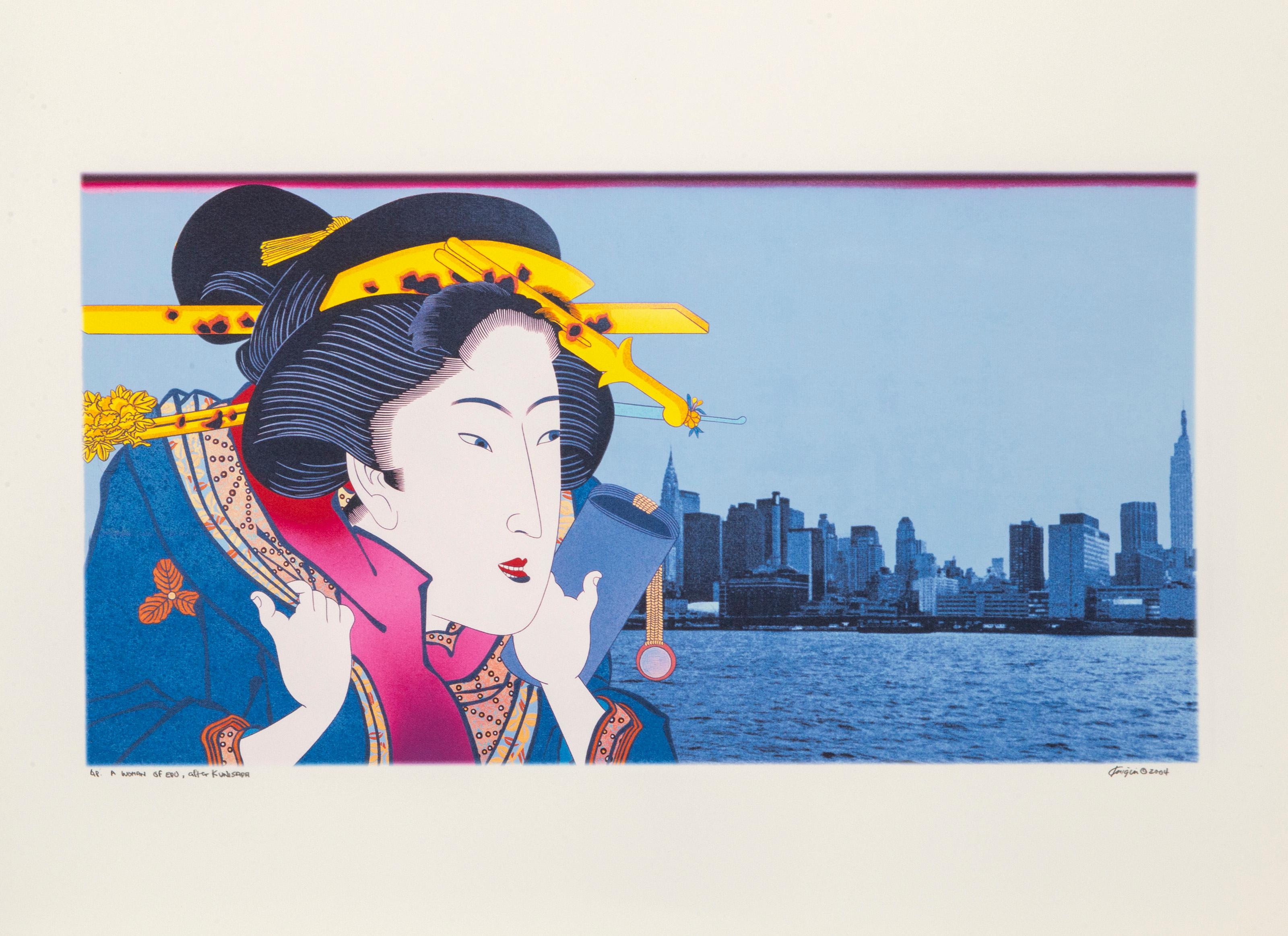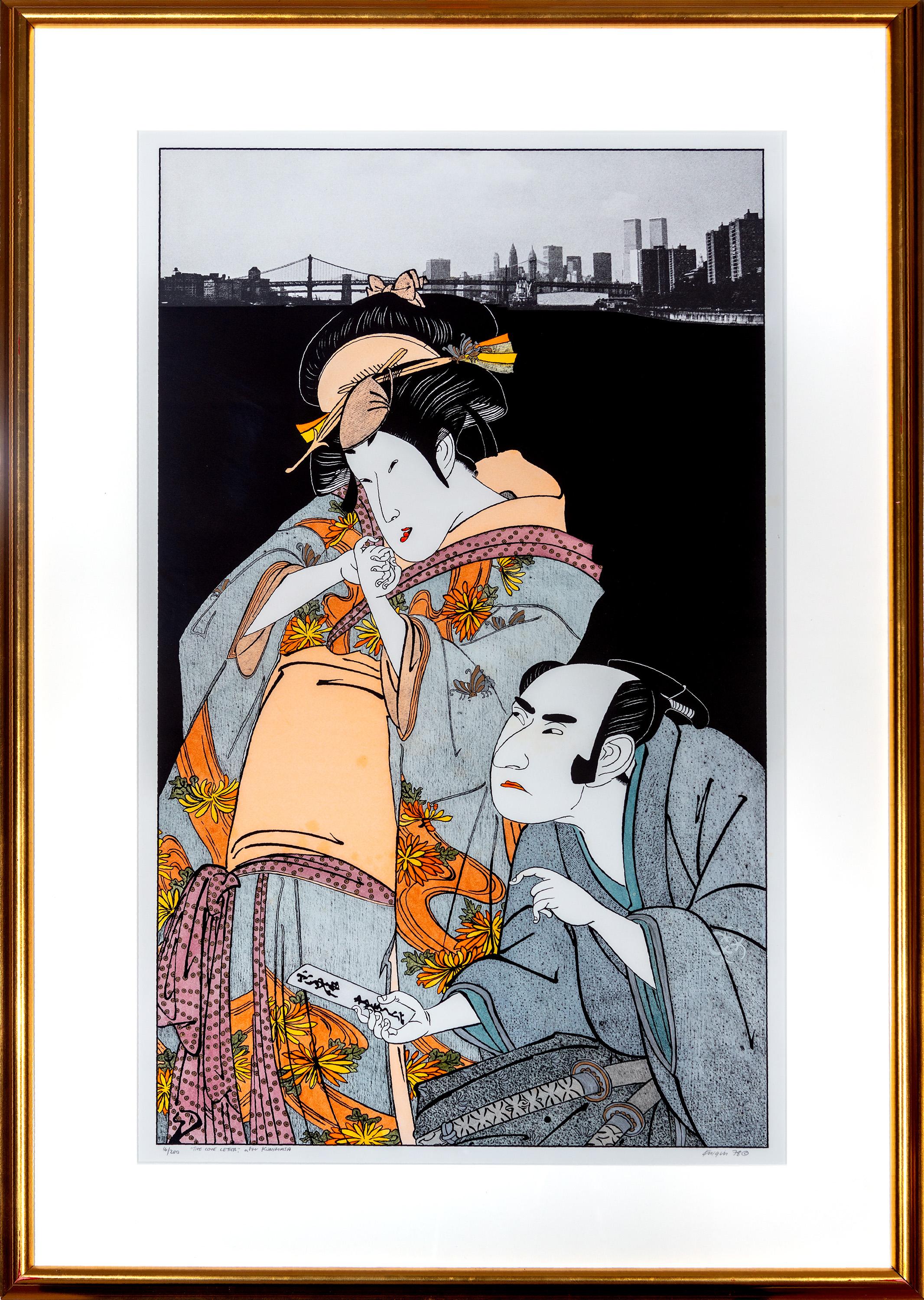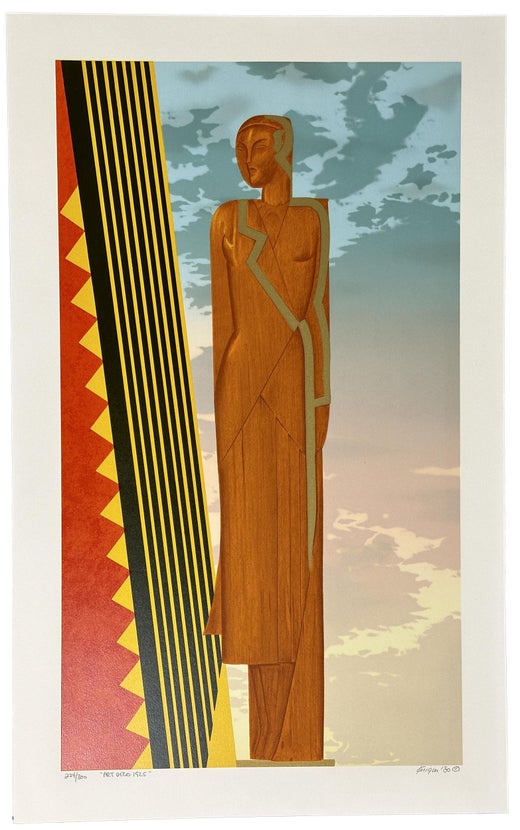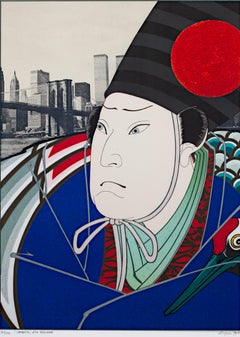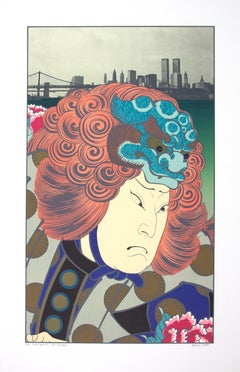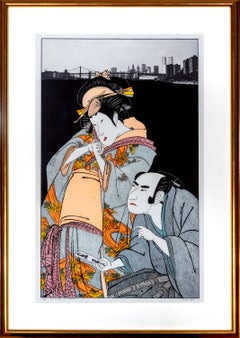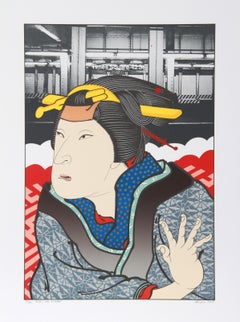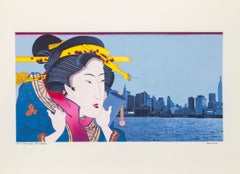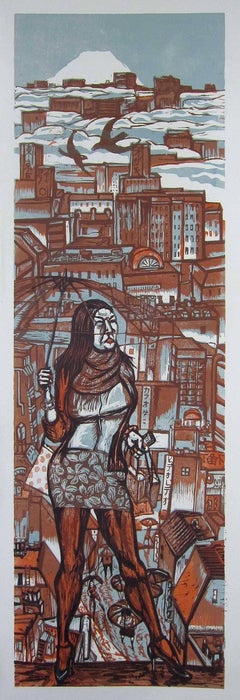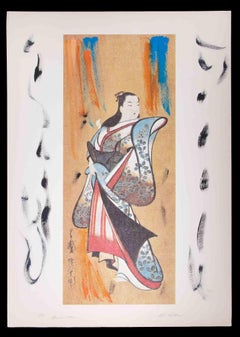Michael Knigin"Sonja, After Hirosada" original lithograph pop figure portrait Japan city scape1979
1979
About the Item
- Creator:Michael Knigin (1942 - 2011, American)
- Creation Year:1979
- Dimensions:Height: 25.875 in (65.73 cm)Width: 17 in (43.18 cm)
- Medium:
- Movement & Style:
- Period:
- Framing:Framing Options Available
- Condition:
- Gallery Location:Milwaukee, WI
- Reference Number:Seller: 13886g1stDibs: LU605313628492
Michael Knigin
Michael Knigin, painter, printmaker, muralist, photographer, and teacher, was born in Brooklyn, New York on December 9, 1942. He received his BFA in 1966 from the Tyler School of Art, Temple University in Philadelphia. In 1964 he was awarded a Ford Foundation Grant, which enabled him to study printmaking at the Tamarind Lithography Workshop and collaborate with Rufino Tamayo. Knigin was a full professor at the Pratt Graphic Center in Manhattan between 1967 and 2003. From 1968 through 1972, he also co-owned and directed the Chiron Press where he worked with Andy Warhol, Louise Nevelson, Kenneth Noland, Larry Poons, and Tom Wesselman. In 1974, he served as Art and Technical Director of the Burston Graphics Art Centre in Jerusalem. In 1988, Knigin was appointed to the NASA Art Team and was sent to the Kennedy Space Center to visually interpret the launch of the space shuttle Discovery. In 1991, Nasa recalled him to interpret the touchdown of the space shuttle Atlantis. Knigin's works were exhibited widely and are in numerous permanent collections including the Albright-Knox Museum, Brooklyn Museum, Carnegie Mellon Institute, Cooper Hewitt Museum, Library of Congress, McNay Museum, Mexico City Museum of Modern Art, Portland Museum of Art, Smithsonian Museum of American Art, Whitney Museum of American Art, and the Worchester Museum of Art. With Murray Zimiles, Knigin co-authored The Technique of Fine Art Lithography in 1969, and Contemporary Lithographic Workshops around the World in 1974. Michael J. Knigin died on January 19, 2011.
- ShippingRetrieving quote...Shipping from: Milwaukee, WI
- Return Policy
More From This Seller
View All1970s Pop Art Figurative Prints
Lithograph, Ink
1970s Pop Art Portrait Prints
Lithograph, Ink
1970s Pop Art Portrait Prints
Lithograph
1970s Contemporary Portrait Prints
Lithograph, Ink
1970s Pop Art Landscape Prints
Lithograph
1970s Pop Art Animal Prints
Lithograph
You May Also Like
1970s Pop Art Figurative Prints
Screen
Early 2000s Pop Art Figurative Prints
Pigment
2010s Contemporary Figurative Prints
Woodcut
1970s Contemporary Figurative Prints
Lithograph
1970s Pop Art Figurative Prints
Screen
2010s Edo Figurative Drawings and Watercolors
Paper, Crayon, Oil Crayon, Graphite
